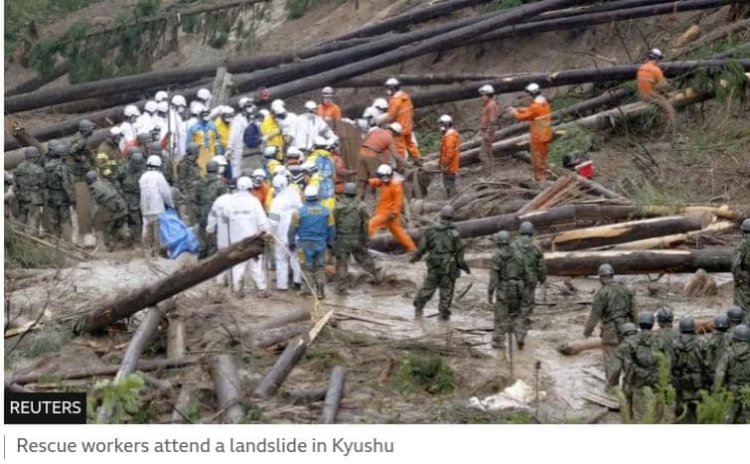Japan storm: Nine million people told to evacuate as super typhoon Nanmadol hits
Bullet train services, ferries, and hundreds of flights have been canceled. Many shops and other businesses have closed, and sandbags have been put in place to protect some properties.

Japan is being pummeled by one of the worst typhoons the country has ever experienced, and nine million people have been ordered to leave their homes.
Nearly 90 people have been injured and two people dead by the super typhoon Nanmadol.
On Sunday morning, it made landfall on Kyushu, the southernmost island in Japan, and is expected to move over Honshu in the coming days.
Nearly 350,000 houses lack electricity, and tens of thousands of people spent Sunday night in emergency shelters.
Transport and commerce have been hampered, and the nation is preparing for significant flooding and landslides.
Nanmadol has produced wind gusts as high as 234 km/h (145 mph), and 400 mm (16 inches) of rain was predicted to fall in some locations in a single day.
Bullet train services, ferries, and hundreds of flights have been canceled. Many shops and other businesses have closed, and sandbags have been put in place to protect some properties.
On Sunday morning, the typhoon made landfall close to the city of Kagoshima, which is located on Kyushu, the southernmost island in Japan.
In Kyushu, a river has overflowed its banks.
One guy was murdered after his car was flooded in water, according to state broadcaster NHK, and another died after being buried in a landslide. 87 people have suffered injuries, and one more person is still missing.
Local video footage reveals crashed billboards and buildings with their roofs torn off.
By Wednesday, the storm is expected to go out to sea after turning east and passing over Honshu, the largest island in Japan. Heavy rains have been falling in the nation's capital, Tokyo, and flooding has forced the suspension of the Tozai underground line.
A level-five alert, the highest on Japan's disaster warning scale, has been issued for more than 500,000 people in the Kagoshima, Miyazaki, Oita, Kumamoto, and Yamaguchi areas.
A total of around nine million people have been ordered to evacuate parts of the Kyushu, Shikoku, and Chugoku regions after a level four alert.
The US Joint Typhoon Warning Center (JTWC) classified Nanmadol as a super typhoon, a phrase used to describe storms with sustained wind speeds of 240 km/h (150 mph) or greater. It is comparable to a storm that is in category 4 or 5.
To assess the storm's effects, Prime Minister Fumio Kishida postponed his trip to New York, where he was scheduled to address the UN General Assembly, until Tuesday.
This year's hurricane season is expected to be very busy, according to forecasters, thanks to a phenomenon called La Nia.
Climate change-related increases in sea surface temperatures in the Atlantic and Caribbean may also have an effect.
The Intergovernmental Panel on Climate Change (IPCC) has said intense tropical cyclones will likely increase on a global scale.

 Boakyewaa Lawrencia
Boakyewaa Lawrencia 


































